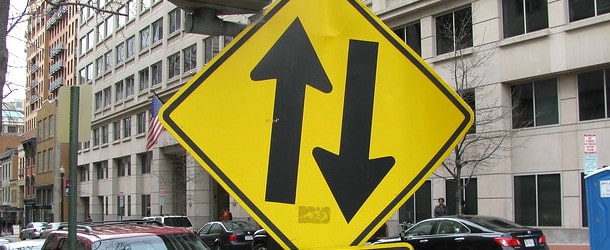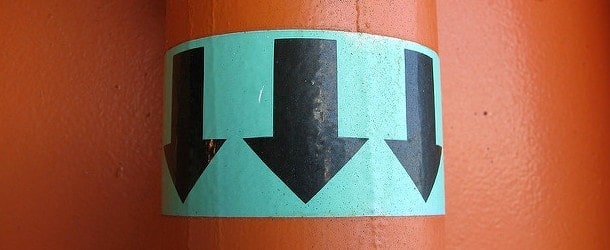
If you’re in the market to purchase a new home, perhaps because mortgage rates are low and you’re an extremely brave individual, you may be thinking low down payment all the way.
Heck, for many borrowers these days, a low down payment is the only way to play, with home prices surging to new all-time highs in record fashion.
In case you hadn’t heard, zero down mortgages are mostly extinct, other than VA loans and USDA loans.
But there are still other low-down payment options, such as the ever-popular FHA loan, which only requires 3.5% down, along with conventional mortgage options that call for just 3% down.
While these low-down payment mortgages can make homeownership more accessible, your mortgage payment will rise, which obviously erodes your affordability.
There are actually three ways a low down payment can increase your mortgage payment, which could even put your loan in jeopardy.
Let’s explore these issues to determine if putting down more money might be the better move.
Less Money Down = Larger Loan Amount
- The most obvious downside to a lower down payment is a larger loan amount
- The less you put down, the more you’ll need to borrow from the bank
- This means paying more each month in the way of principal and interest
- Pay extra attention to loan amount if it’s close to the conforming limit
First and foremost, if you put less money down on your home purchase, you’ll wind up with a larger mortgage. There’s really no way around it.
For example, if a home is listed for $500,000 and you put down 20%, your loan amount would be $400,000.
If you’re only able to come in with 3%, your loan amount is a significantly higher $485,000.
Simply put, a larger mortgage balance means a higher monthly mortgage payment. So the less you put down upfront, the more you pay each month.
That bigger loan amount also means you’ll pay a lot more interest over the life of the loan.
So this hurts two-fold. Both month-to-month in terms of potential payment stress, and over time via a lot more interest paid.
The upside might be less money trapped in your home, which could be put to use elsewhere for a higher return.
[What mortgage amount can I qualify for?]
More Risk Means a Higher Interest Rate to Compensate
- Another issue with putting less down is a potentially higher interest rate
- Lenders charge pricing adjustments that increase as the LTV ratio goes up
- This could raise your mortgage rate a little or a lot depending on all the factors in play
- Those with low credit scores could be impacted even more when coming in with a low down payment
Before you go with a low down payment mortgage, consider the mortgage rate impact of doing so.
If you decide to put down just 3-5%, your loan-to-value ratio (LTV) will be pretty high, and that means more risk to the issuing bank or lender.
To compensate for this increased default risk, you will likely be offered a higher interest rate on your mortgage.
Those rock-bottom rates you see advertised often require a 20%+ down payment, similar to how they assume you have an excellent credit score.
So if you don’t put down 20%, and instead opt for 5% or less, you’ll probably be stuck with an inferior mortgage rate.
How much worse will depend on the full loan scenario, including your FICO score, property type, occupancy, and so on.
For example, if the 30-year fixed is averaging 3% for top-tier loan scenarios, you might be offered an interest rate of 3.75%.
That higher interest rate will result in an increased mortgage payment, and more money paid out to the bank via interest.
This additional cost can add up significantly over the life of the loan as well.
And remember, it’s a one-two punch when you consider the larger loan amount coupled with the higher mortgage rate.
To add insult to injury, it could also affect outright eligibility in some cases if you’re debt-to-income ratio (DTI) is near the cutoff.
In other words, you may need to put down more to even get approved for a mortgage to begin with.
Mortgage Insurance Might Be Required
- One final problem with low-down payment mortgages is the mortgage insurance requirement
- This applies to most home loans where the down payment is less than 20%
- This can greatly increase your overall housing payment as well depending on all risk factors
- And is yet another added cost that can be avoided if you simply put down more money at closing
Finally, if you put down less than 20%, and don’t go with a piggyback second mortgage, you’ll likely be subject to paying mortgage insurance.
This applies to loans backed by Fannie Mae and Freddie Mac, which are the most common.
For FHA loans, this MIP requirement is unavoidable, even if you happen to come in with 20%+.
And note that this insurance protects lenders (not you) from the higher risk of default associated with a low-down payment mortgage.
It will be added on top of your monthly mortgage payment, so you’ll owe even more each month until you pay your loan balance down to 80% LTV (and ask that the insurance be removed).
The good news is it can be avoided by simply coming in with a 20% down payment and not taking out an FHA loan.
Let’s look at an example to put it all in perspective:
Home purchase price: $400,000
20% down: $80,000 $320,000 loan amount @3.75% (30-year fixed) Monthly mortgage payment: $1481.97 Total interest paid: $213,509.20
5% down: $20,000 $380,000 loan amount @4.375% (30-year fixed) Monthly mortgage payment: $1897.28 Total interest paid: $303,020.80
Assuming you went with a 30-year fixed mortgage, the 5% down option would result in a monthly mortgage payment more than $400 higher than the 20% down option (before mortgage insurance is even factored in).
Note the higher mortgage rate on the low-down payment loan.
And you’d pay nearly $90,000 more in interest over the life of the loan.
In other words, down payment matters. A lot.
Bonus: The amount you put down can also keep your loan out of the jumbo mortgage realm, which will often make it even cheaper mortgage rate-wise.
So consider that as well if you happen to be close to the conforming loan limit.
And as always, be sure to do plenty of homework and mortgage rate shopping.
If you take the time to gather multiple quotes and consider all scenarios, you may be able to get the best of both worlds, a low-down payment mortgage with a low interest rate.
Learn more by reading my primer on mortgage down payments.



